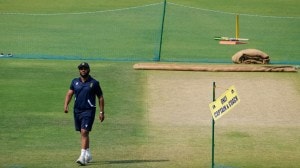THE HEALTHY COMBO
Did you know that you should avoid drinking water with your meals? Or that the ubiquitous palak-paneer is not as healthy as it is tasty?
Did you know that you should avoid drinking water with your meals? Or that the ubiquitous palak-paneer is not as healthy as it is tasty? Read on to know the right food mixes
When you think food combos,you imagine a burger with fries and a can of coke. For the traditional junkie,food combo would spring up a picture of a thali thats got colourful veggies,rice,raita and gulab jamun. Well,why not think about food combos from the perspective of nutrition? Did you know that squeezing a lemon over lettuce or broccoli or any other green salad can make the latter more beneficial? Thats because the vitamin C present in the lemon helps convert the iron in the lettuce into a form that your body can absorb easily. Similarly,whenever you cook fish,add garlic to it because that would lower the little increase in LDL (the bad cholesterol) that may result from oil present in the fish. Garlic,after all,contains cholesterol-lowering compounds.
Cook your fish curry in coconut paste. Coconut is high on saturated fats,but that harmful factor is compensated for by the high levels of Omega 3 fatty acids that fish provides. Also,cook tomatoes in olive oil while making pasta or pizza sauce. Good fat,like in olive oil,facilitates the absorption of lycopene,a fat-soluble phytochemical that acts as an anti-oxidant. The right food combination or food synergy,as nutritionists like to term it,keeps you healthy.
There are various ways to combine different foods based on the nutrients they provide. While iron and Vitamin C click,combining iron with calcium fails the absorption of both,says Dr Sandeep Chhatwal,director,Omni Hospital,Chandigarh. Instead of the usual palak with paneer dish (palak or spinach has iron; paneer has calcium),combine palak with corn. Also,dont swallow an iron pill with a glass of calcium-rich milk, he says.
Team up your chicken curry with salads. Non-vegetarian dishes,when cooked,have zero fibre left in them to get pushed down the intestinal tract. Portions of vegetables and salads will correct this. More than that,they make the meal wholesome,bringing in phytonutrients that will assist in absorbing the protein present in the chicken better.
Lucknow-based nutritionist Dr Amitabh Pandit suggests we avoid drinking water with our meals,as it dilutes the digestive juices,leading to gas formation and acidity. Having desserts soon after lunch or dinner also decays the food before it gets absorbed thus leading to premature ageing over the years,he warns. Desserts cannot be digested after the carbohydrate and protein intake,they create fermented alcohols,vinegars and acetic acids.
It is important to consume at least 60 per cent alkaline-producing foods in our diet,for good health. A high-protein diet (rich in lentils and meat) causes acidity and thus we need alkaline food (vegetables) to balance our Ph. Our gastric juices are able to digest and absorb only one type of food at a time and so we need to eat only one category of food at a time be it protein or carbs for aiding digestion. Eat plenty of fresh fruits and vegetables (alkaline-producing) to balance your intake of lentils and meat (acid-producing).
Mehrotra advises eating carbohydrate foods and protein foods at separate meals. The protein-based foods excite acids in the stomach while the starch or carbs will start the alkalis flowing and the two will instantly neutralise each other,forming a watery solution,digesting neither. This causes digestive stress,including gas,heartburn,cramps,bloating,constipation,foul stools and so on. It is virtually not possible to eat meals in a sequential format where one eats only milk and then only cereal and then only dal. We must strive to follow at least a few do-able, says Mehrotra.





- 01
- 02
- 03
- 04
- 05


























